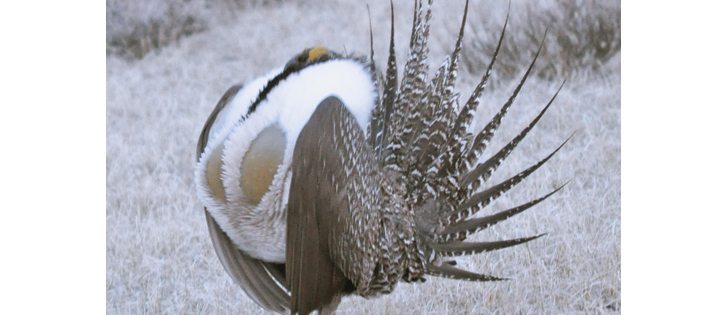Landowners say the recovery strategy is confusing and allows anybody to ‘stick their nose in and control the land base’
The federal government’s new recovery strategy for the endangered sage grouse has done little to ease fears among ranchers in Alberta and Saskatchewan.
The strategy, which was written and filed late last year, stems from a federal government emergency protection order that took effect in February 2014.
The order imposed restrictions on human activity in 1,700 sq. kilometres of grassland in southwestern Saskatchewan and southeastern Alberta.
Fewer than 90 sage grouse are thought to be left in Canada, which is the northern edge of the birds’ range.
Read Also

More factors affecting winter weather
When you combine a weak La Niña, early Siberian snow, and a warm northern Pacific, it’s easy to see why long-range winter forecasting is so complex.
The emergency protection order raised the ire of ranchers in the affected region, and the recovery strategy has done little to soothe their fears of grazing restrictions and potential penalties.
Keith and Ronda Reesor, who ranch near Irvine, Alta., are among the ranchers affected by the order.
The recovery strategy doesn’t refer to forage use, beyond noting that prolonged over-grazing would be detrimental to habitat, but the emergency order said grazing beyond specific levels was prohibited.
“The concern is now, the way it reads, the grazing is up to the interpretation of someone other than the grazing manager. It could be an environmental group. It could be a biologist with a biased opinion toward a specific species, rather than the whole ecosystem. This really concerns us,” said Ronda Reesor.
“I guess we would feel that we were sort of guilty until we prove ourselves innocent.”
The recovery strategy is a “planning document,” as stated in its preamble, and is not legally enforceable. That makes it somewhat confusing to those who must live by it and the emergency protection order that preceded it.
“If we want to have just anybody stick their nose in and control the land base, they’ve got pretty much free rein to do it under the strategy,” said Keith Reesor.
“The strategy doesn’t have any legal teeth, and yet the EPO and the strategy and the SARA act all pivot on each other. It just doesn’t make sense to us.”
The emergency order for the sage grouse was the first time the federal government had imposed such an order as part of the Species at Risk Act to protect a native species.
“Our goal with this emergency order is to achieve the best protection for the sage grouse while minimizing impacts on landowners and agricultural producers,” federal environment minister Leona Aglukkaq said when she made the announcement in December 2013.
It prohibited new oil and gas development, new road and fence construction and loud noises during the grouse mating season.
The order applied only to public land but the recovery strategy includes 2,812 sq. kilometres, some of it private land.
The prospect that other emergency protection orders might be issued in other areas that host endangered species grabbed the attention of other landowners and ranchers.
The Canadian Cattlemen’s Association has been watching developments with an eye on grazing.
“There are a number of species at risk on grasslands because we have only about 20 percent of the grasslands left in North America,” said Fawn Jackson, manager of environment and sustainability for the CCA.
“Going forward, we really need to continue to emphasize to the federal government that we need an ecosystem approach for that.”
Jackson said initial restrictions in the emergency order that limited grazing may have been too restrictive, given the variables associated with grassland habitat, rainfall and topography.
“I think cattle producers know the best how important those habitats are and how mismanagement can have negative impact and how good management can have a really positive impact,” said Jackson.
Keith Reesor agreed.
“They’ve rewritten the strategy, but they sure haven’t helped explain that the landowner has been doing a good job,” he said.
“They’re more putting the accent on that we’re doing a poor job, and we don’t appreciate it.”
He said predators likely play a larger role in sage grouse mortality than human activity in the region. Swift foxes have been reintroduced, coyotes have proliferated and ravens and other birds of prey take a toll on the birds.
Those factors appear to have been acknowledged in the recovery strategy, which listed the level of threat from predators as high instead of medium as it was in the emergency order.
The Reesors participated in species at risk round table discussions in Ottawa in December and found like-minded people around that table.
Reesor said his cows continue to graze the same land they did before the emergency protection order, but it has put the affected ranching community on edge. The restrictions might also have affected land values.
“Are we going to be able to operate for the next generation under this EPO and others like it in our area if some more occur? It could be pretty difficult.”
Contact barb.glen@producer.com
















